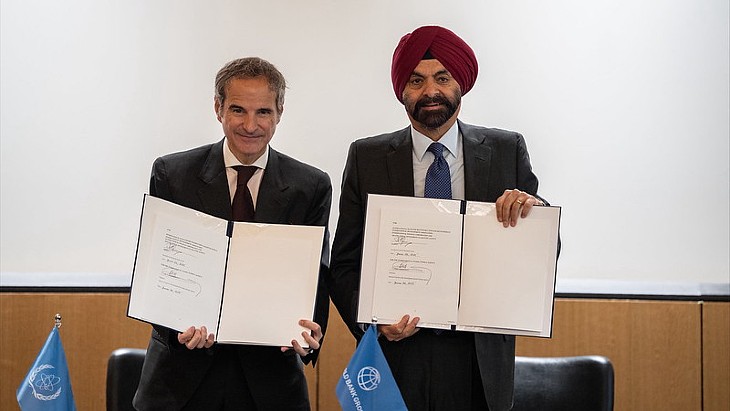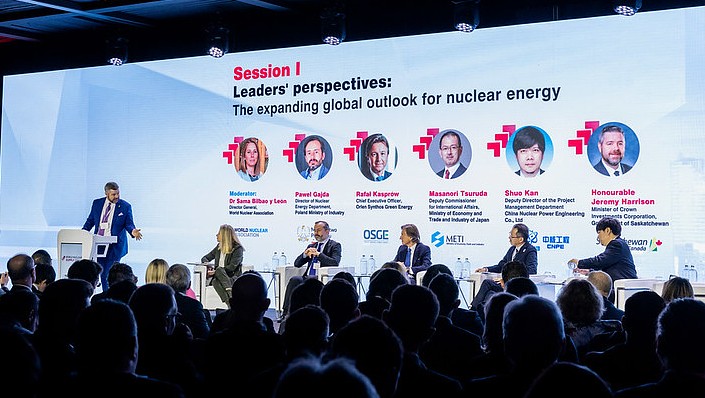First criticality for Tianwan unit 4
.jpg)
Tianwan Phase I - units 1 and 2 - was constructed under a 1992 cooperation agreement between China and Russia. First concrete was poured in October 1999, and the units were commissioned in June 2007 and September 2007, respectively.
Tianwan Phase II - units 3 and 4 - are similar to the first stage of the Tianwan plant, comprising two AES-91 VVER-1000 units designed by Gidropress and supplied by Russian state nuclear corporation Rosatom. First concrete for unit 3 was poured in December 2012, while construction of the fourth unit began in September 2013. Unit 3 achieved first criticality on 29 September last year and was connected to the grid on 30 December. The unit entered commercial operation on 15 February having completed demonstration operation at nominal capacity for 100 hours.
The loading of a total of 163 fuel assemblies into the core of unit 4 was started on 25 August and completed on 2 September.
The reactor achieved first criticality at 2.27pm on 30 September, Rosatom and China National Nuclear Corporation (CNNC) have announced.
"Loading of fuel was completed ahead of schedule, and after obtaining all the required permits, unit 4 of the Tianwan nuclear power plant was brought to a minimum controlled level of power," said Alexey Bannik, ASE Group's director of projects in China. ASE Group is Rosatom's engineering subsidiary. "A controlled chain reaction started, the monitoring systems recorded the first neutrons. This will be followed by power start-up and connection of the unit to China's electricity grid."
Tianwan 4 is expected to enter commercial operation in March 2019.
Construction of Tianwan Phase III - units 5 and 6 - was originally scheduled to start in early 2011. However, following the March 2011 accident at Japan's Fukushima Daiichi plant, the Chinese government suspended the approval of new nuclear power projects, including those two units.
The latest Five-Year Plan called for construction of Phase III of the Tianwan plant to be accelerated. China's State Council gave its approval for Tianwan units 5 and 6 - both featuring 1080 MWe ACPR1000 reactors - on 16 December 2015. First safety-related concrete was poured for unit 5 on 27 December 2015, with that for unit 6 poured on 7 September 2016. CNNC plans to put both units 5 and 6 into commercial operation by the end of 2021.
On 8 June, Russia and China signed four agreements, including for the construction of two VVER-1200 reactors as units 7 and 8 of the Tianwan plant. In addition, two VVER-1200 units are to be constructed at the new Xudabao site in Liaoning province.
The Tianwan plant is owned and operated by Jiangsu Nuclear Power Corporation, a joint venture between CNNC (50%), China Power Investment Corporation (30%) and Jiangsu Guoxin Group (20%).
_92619.jpg)


_84504.jpg)







